Welcome to our IPTV Service In This Tutoriel The Best IPTV Service AKTV IPTV SUBSCRIPTION Will Show With AKTV Amazon Fire TV Stick 4K vs Roku Streaming Stick 4K. The Roku Streaming Stick 4K and Fire TV Stick 4K are both excellent 4K streaming devices, but they have key differences. The Roku is known for its simple, user-friendly interface, while the Fire TV Stick offers more advanced features like Dolby Vision support and Alexa voice control. Ultimately, the “better” choice depends on individual needs and preferences.
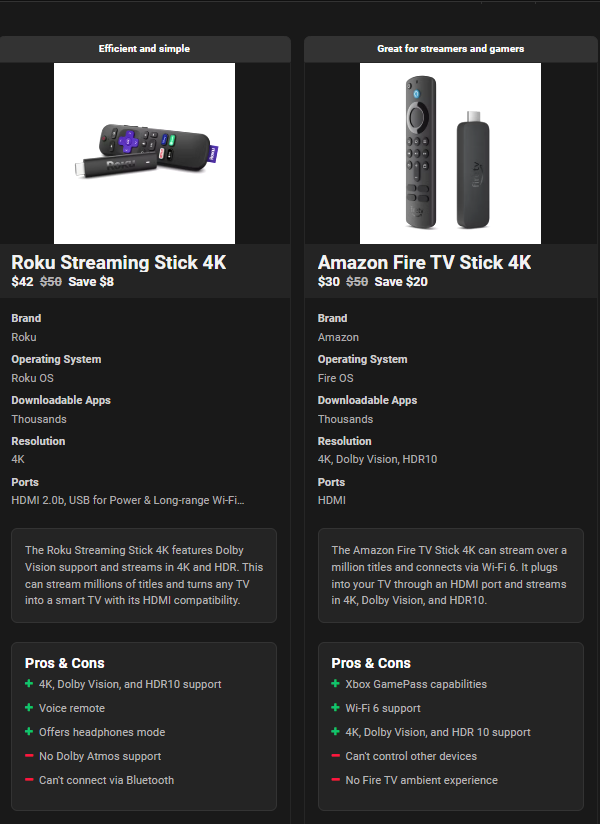
It’s never too late to rethink your streaming situation. If you’re someone that loves their TV and has no interest in buying a new one, you are probably on the lookout for something that can enhance it. Maybe it’s a soundbar that delivers a true movie theater feel to your living room. Maybe it’s adaptive lighting that syncs its lights to the mood on the screen. More commonly, it’s probably a streaming device that boosts your experience.
Two of the most popular streaming device companies are Roku and Amazon. The Roku Streaming Stick and the Amazon Fire TV Stick have been the flagship streaming devices for those companies, as both offer the ability to turn your regular TV into a smart one. Each company offers plenty of options, but some of the most budget-friendly ones are the Roku Streaming Stick 4K and the Amazon Fire TV Stick 4K.
While they don’t have all the top features, they are ideal for anyone looking for the biggest bang for their buck on a budget. Which one is right for you?
Price, specs, and availability
They’re priced comparably
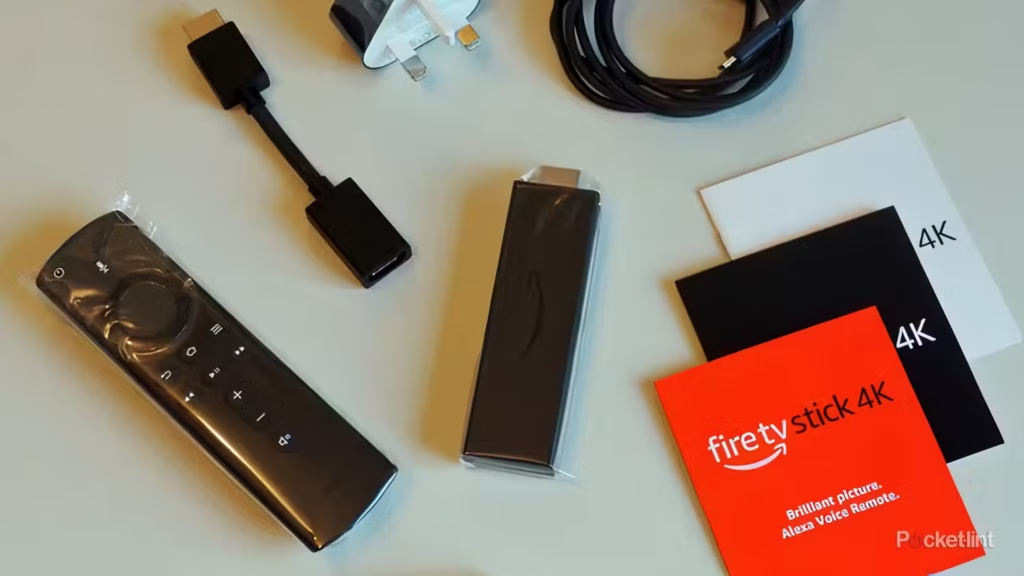
The Roku Streaming Stick 4K retails for $50 but is regularly discounted on websites like Amazon or Best Buy, though it may be a bit harder to find than some of the newer streaming devices. It can be plugged into an HDMI port into the back of your TV and comes with a power cable and long-range Wi-Fi receiver. It measures only 94.5mm x 21.1mm x 11.5mm and connects via Wi-Fi 5.
The Amazon Fire TV Stick 4K also retails for $50 and is also available at retailers like Amazon and Best Buy. It frequently gets deep discounts throughout the year, so you might want to wait for a sale. It also plugs into an HDMI port and has a power cable that plugs into an outlet. It’s only slightly larger than the Roku Streaming Stick 4K, measuring 99mm x 30mm x 14mm. This connects via Wi-Fi 6 with a greater Wi-Fi performance.
Roku Streaming Stick 4KAmazon Fire TV Stick 4KBrandRokuAmazonOperating SystemRoku OSFire OSDownloadable AppsThousandsThousandsResolution4K4K, Dolby Vision, HDR10PortsHDMI 2.0b, USB for Power & Long-range Wi-Fi receiverHDMIConnectivityWi-FiWi-Fi 6Dimensions3.7″ x 0.80″ x 0.45″99mm x 30mm x 14mmIntegrationsWorks with Apple AirPlay and HomeKit, Google Home, AlexaWorks with Apple AirPlay and HomeKit, Google Home, Amazon Alexa
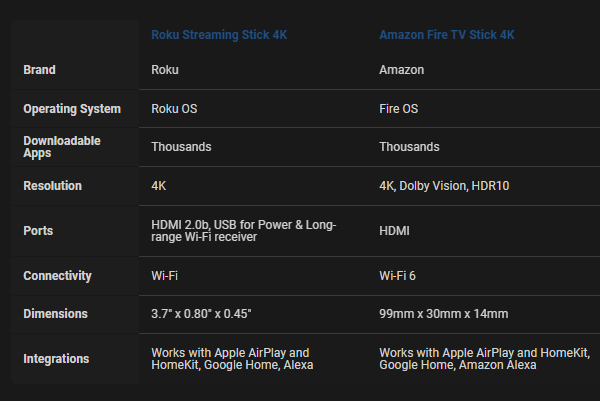
They feature similar designs
But the one has better brain power
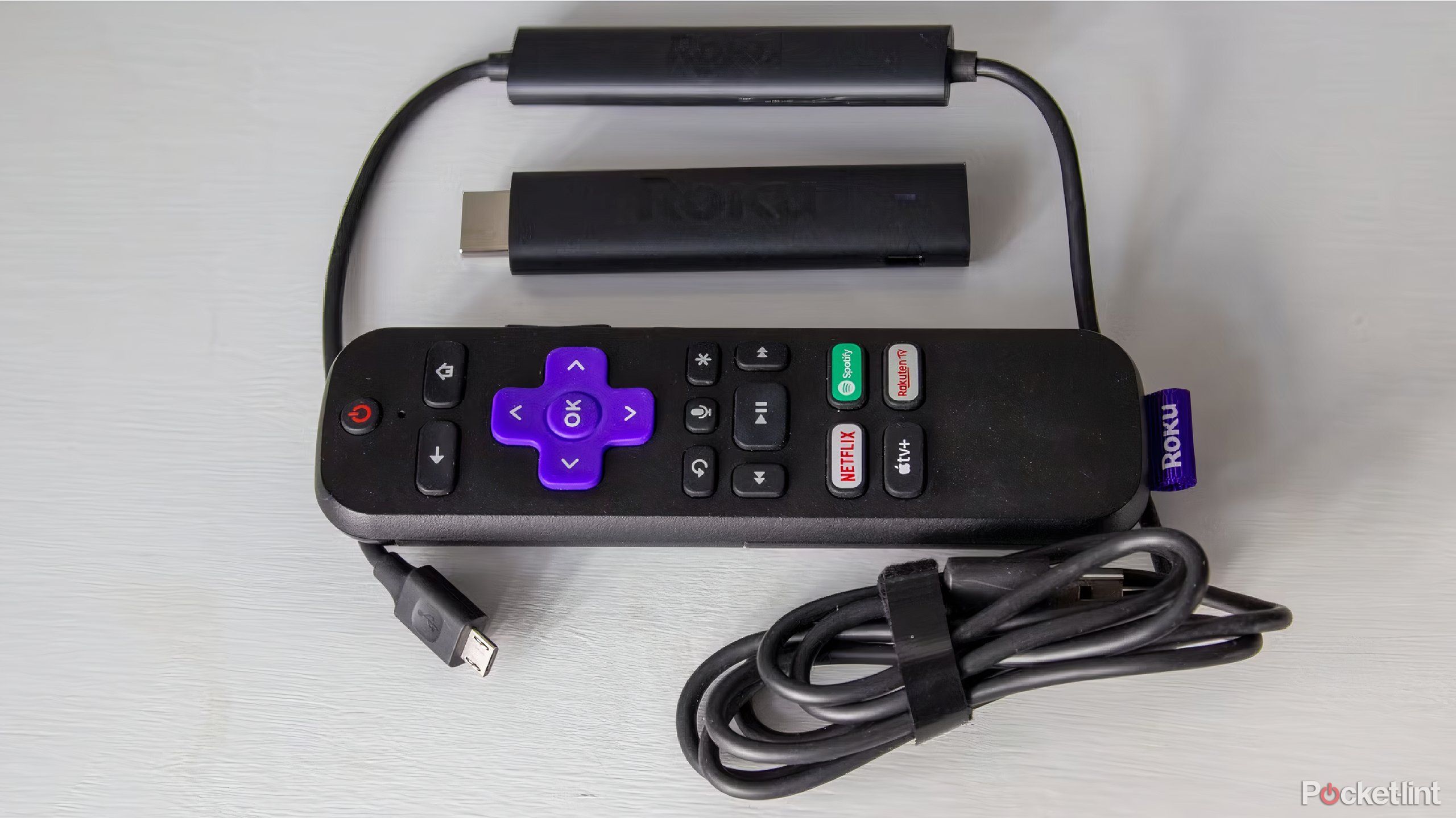
As I said, both of these streaming devices plug into the HDMI port and feature cables that have Wi-Fi extenders. They’re similar in size and plug into the HDMI port. The difference you’ll find between these two streaming sticks is how you interact with their remotes.
They both offer voice features, so you can give them verbal commands by pressing a specific button. The Amazon Fire TV Stick 4K remote has Amazon Alexa built into it, so it’s more capable of following complex commands than the Roku remote.
Each remote has buttons that will automatically open up apps, such as Netflix, Disney+, Paramount+, Hulu, and others, which means quite a bit fewer manual button presses on your end. Both of the remote interfaces are available in the corresponding manufacturer’s app and allow you to turn your smartphone or tablet into a remote in case you lose yours or just want a digitized version.
The buttons to automatically open up streaming apps vary for the different streaming services available.
The software differences are stark
The interfaces prioritize different things

Roku
In terms of using the operating systems, they’re vastly different. Both offer access to a ton of apps for streaming purposes, but Roku OS is focused on laying out the apps and having you go into them. You’ll see ads on the right side of the screen, offering up suggestions for certain content.
But, Roku doesn’t make a point of suggesting shows to you or curate any type of personalized content. It leaves the apps to do that once you open them.
Fire OS has an organized main menu that displays stream-able shows and which app they’re on. You can also search for content right in the menu, and it will show you whatever is available through Fire OS or Prime Video. It basically uses Prime Video’s interface as its main menu to suggest content and keep track of what you’ve watched — it’s a much more customized effort.
Fire OS also has the option to toggle over to Xbox GamePass with gaming options built right into the software. If you have a Roku TV, you have gaming options, but not with a Streaming Stick. You can also buy things directly from your Fire TV Stick 4K, as the device is linked to your Amazon account. Roku OS does make it easy to reorganize the apps on your menu and sort them however you choose.
Don’t forget about the secret screens in Roku OS that show you diagnostic information and more.
Both devices perform very well
But one does have an edge
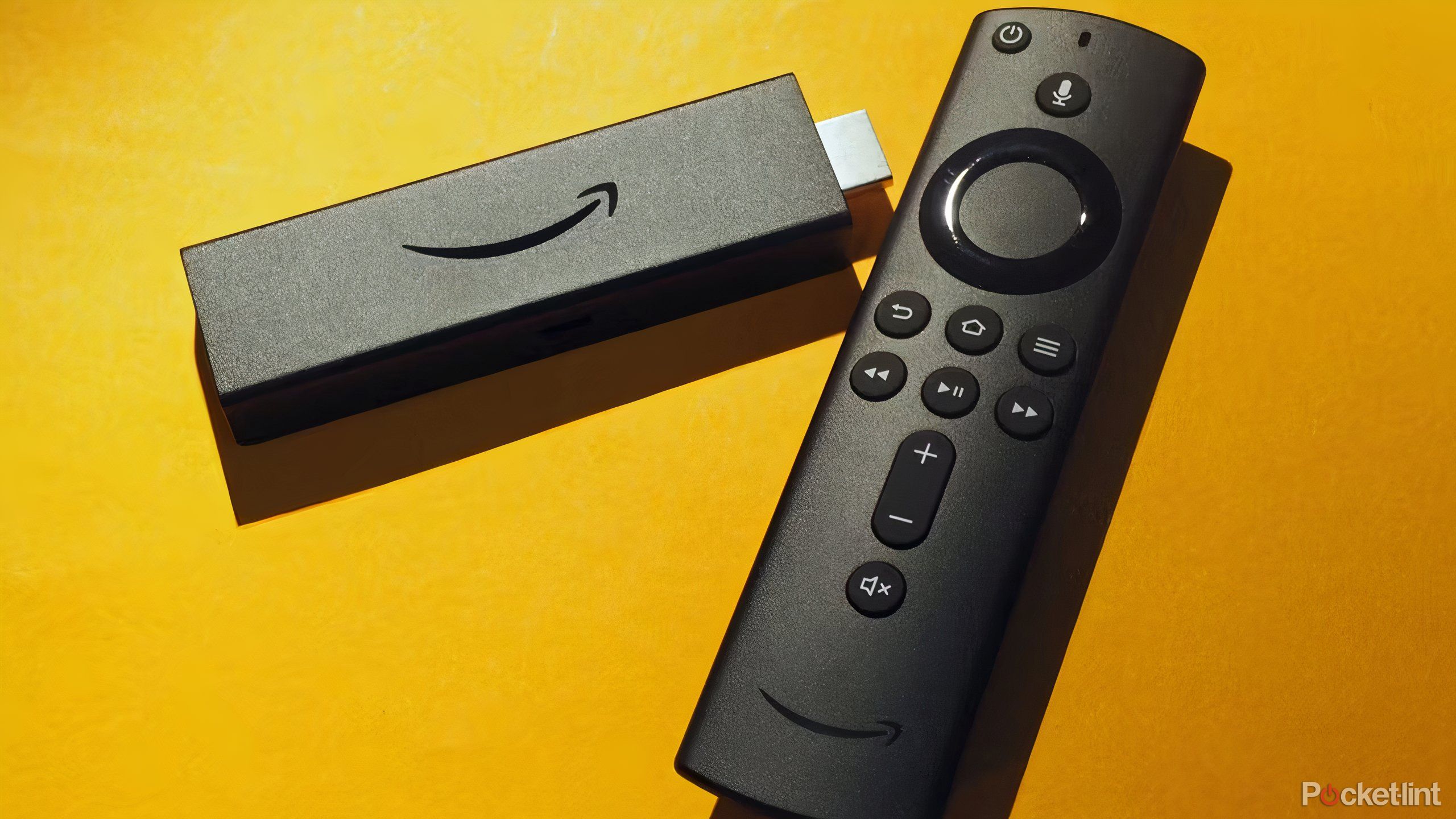
The hardware for these streaming devices is impressive, even a few years after they’ve been released. The Fire TV Stick 4K runs on a Quad-core CPU and has 8GB of storage and 2GB of RAM. So, it can store a lot of data as you use it, and it runs efficiently and quickly. It can also run faster because it can connect to a Wi-Fi 6 connection (as long as it is connected to a router using Wi-Fi 6) and can connect via Bluetooth.
The Roku Streaming Stick 4K does not have Bluetooth connectivity.
The Roku Streaming Stick 4K has an ARM Cortex A55 CPU and has 1GB of RAM and 4GB of storage. While it can’t hold as much on it, the odds that you are going to be using up 4GB of storage for streaming purposes are probably slim. It connects via Wi-Fi 5 and does not have Bluetooth connectivity.
Both of these streaming devices support content in Dolby Vision, HDR10, and 4K resolution. So, if your content is sharp and clear, your stick will be able to match it. This opens up possibilities to view the best content the way that it was meant to be viewed. The Fire TV Stick 4K offers Dolby Atmos audio while the Roku Streaming Stick 4K does not.
Which one of the streaming sticks is right for you?
It comes down to personal preference
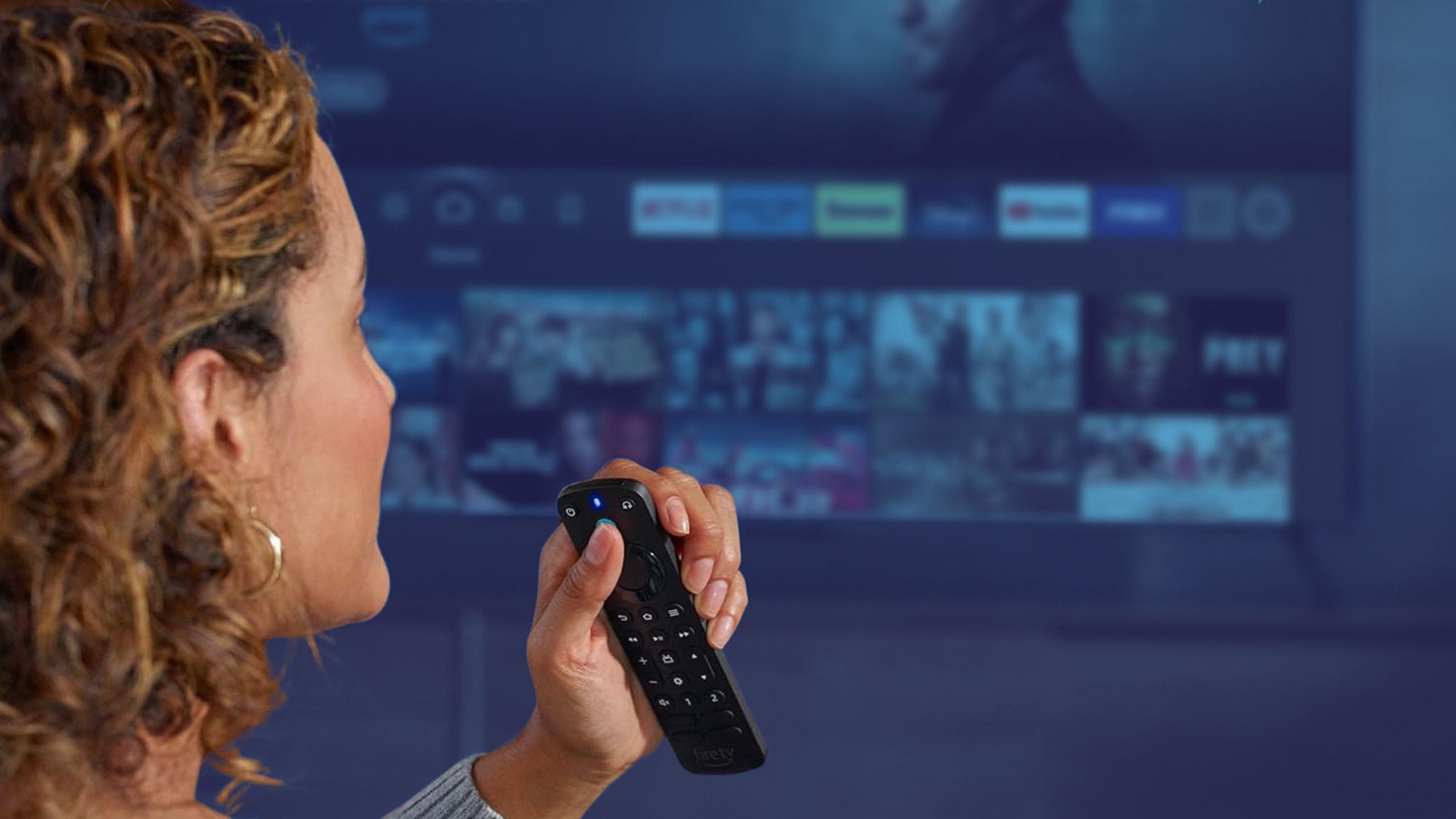
Amazon /
Both the Amazon Fire TV Stick 4K and the Roku Streaming Stick 4K are budget-friendly and often discounted to give you an even better deal. They support premium content, in terms of video formatting and resolution, so you’ll be watching good-looking shows and movies no matter what. It really comes down to which one you feel more comfortable using. If you’re used to using Roku OS, you may want to go the Roku route. If you like Fire OS, or have used Prime Video before, you may opt for Amazon’s option.
I’m siding with the Fire TV Stick 4K.
Because of its customization options and curated content, I’m siding with the Fire TV Stick 4K. It has Xbox GamePass built in and can connect to faster Wi-Fi to run more effectively. Seeing all the content options on the main menu is a huge plus in my book. While it may not be for you, if you don’t already have a preference between the two operating systems, this one gives you so much for your money.
Explore the best IPTV reseller panel with AKTV SHOP IPTV and take your business to the next level with ease!
For more information or to subscribe, visit the official website: Aktv IPTV Premium.

Leave a Reply